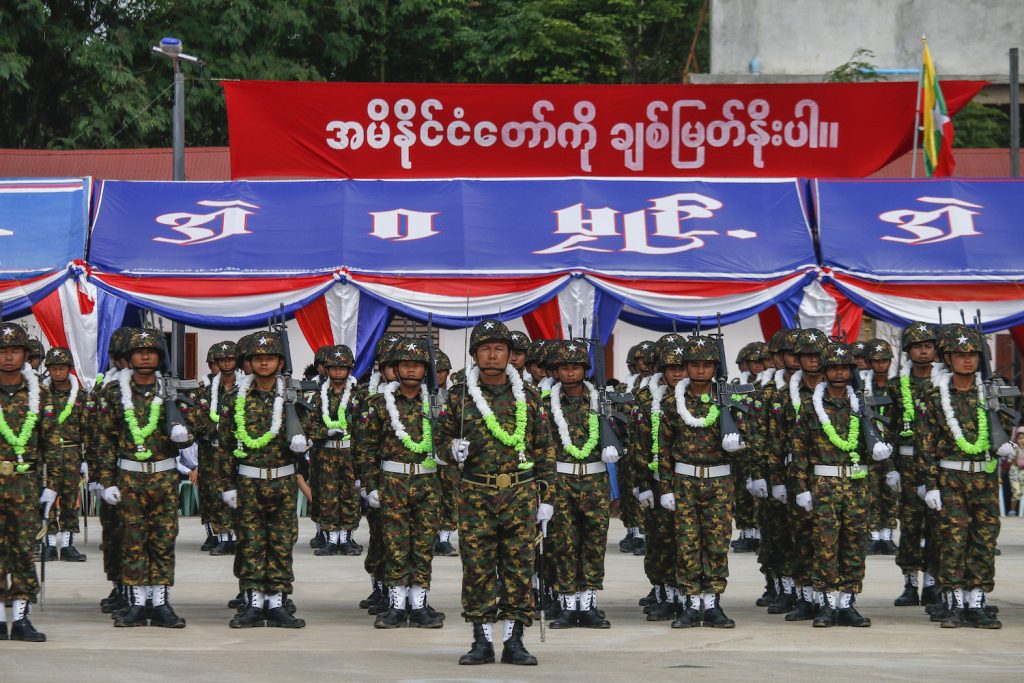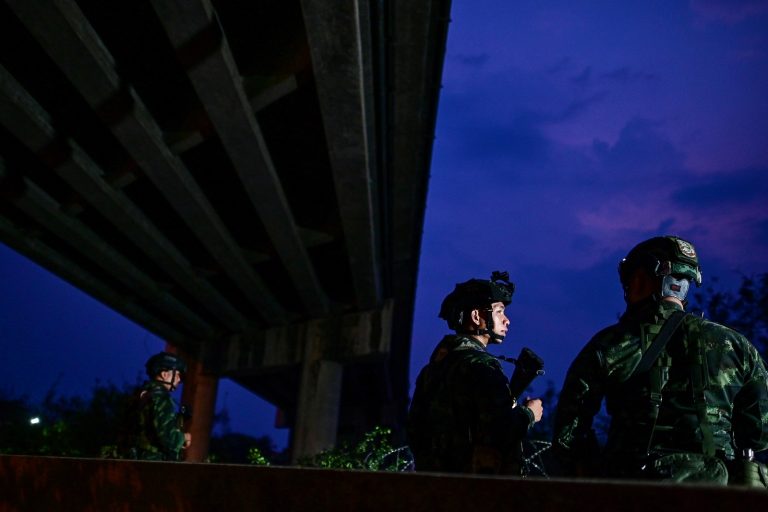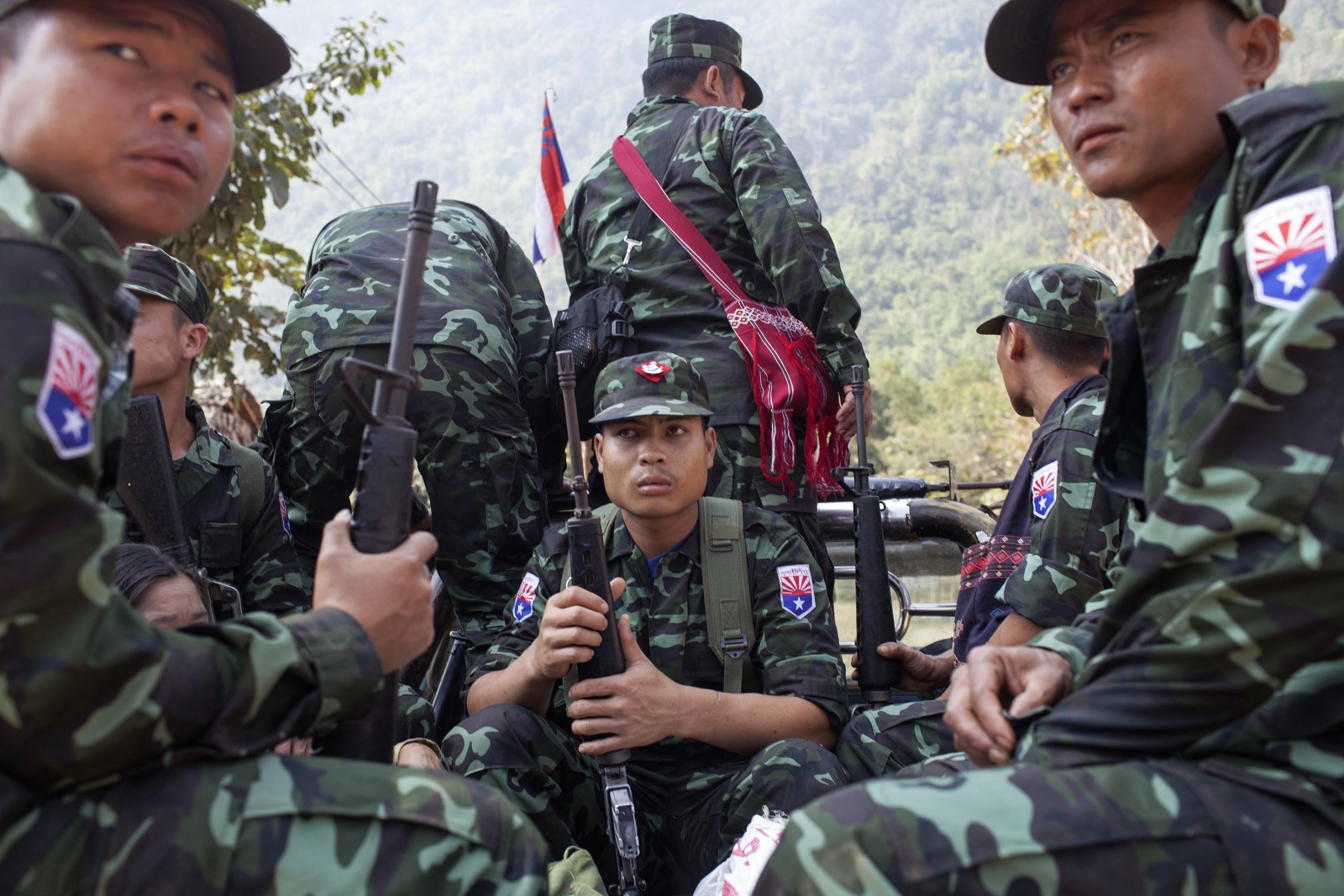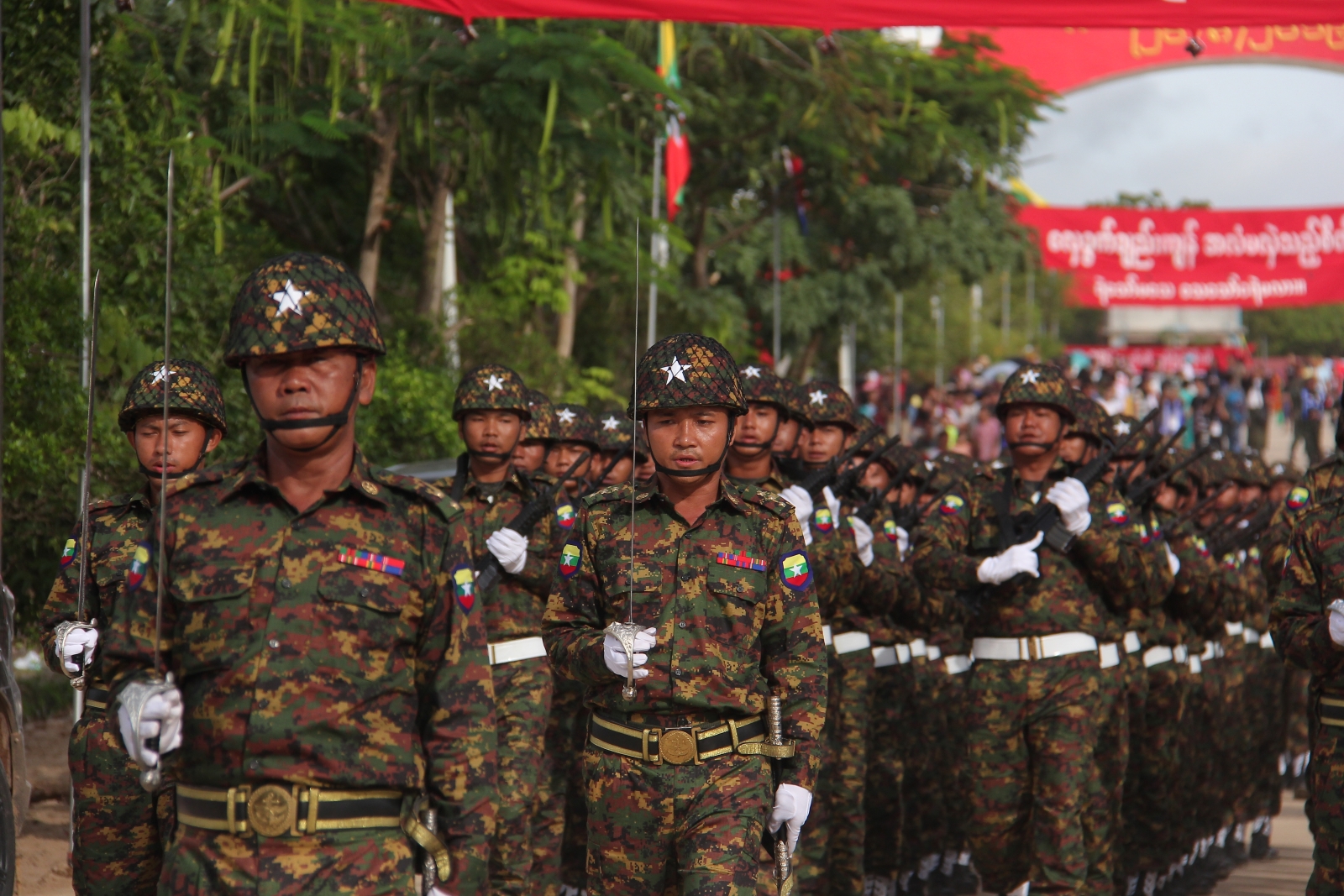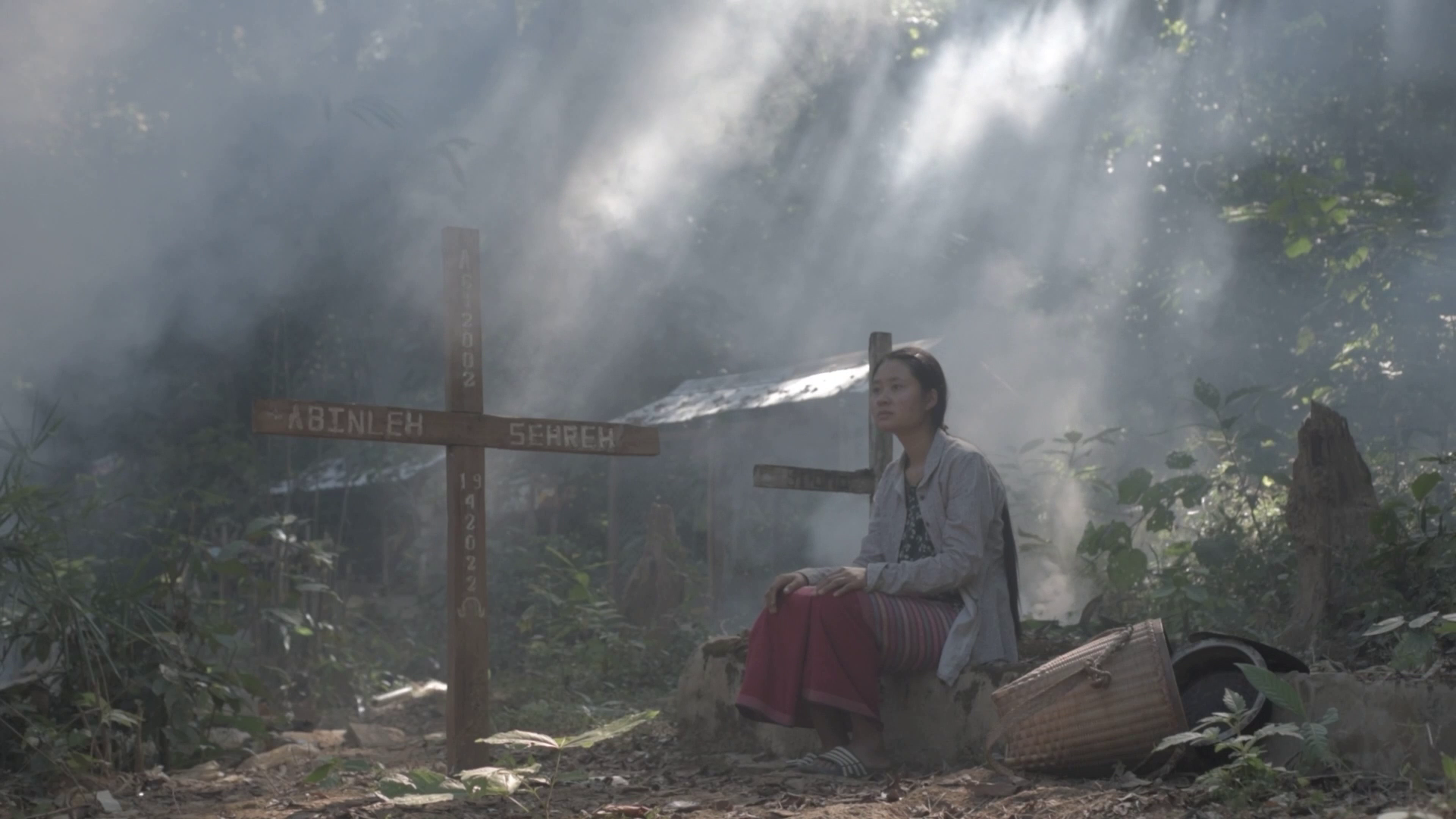OPINION
The Kayin State Border Guard Force seeks autonomy for motives ranging from protecting its casino assets to appeasing unhappy combatants and civilians, but what comes next will be crucial for the conflict.
By SAW SAY GAY and GEORGE ASHEN FEN | FRONTIER
The Thai Public Broadcasting Service was the first to break the news, on January 22, that the Kayin State Border Guard Force was poised to split from the Myanmar military. BGF troops had reportedly withdrawn from frontline positions and were massing around the group’s headquarters at Shwe Kokko, apparently to guard against retaliatory attacks.
The group originated as a splinter faction of the Karen National Union, breaking from the veteran resistance group in 1994 to side with the military and coming under its direct command in 2010. Since the 2021 coup, the BGF has provided crucial support to the military against a resurgent KNU, making the reported split a potential gamechanger for the resistance in southeastern Myanmar.
Details remain sparse on what precipitated the move. However, it’s known that on January 11, the junta’s Minister of Information U Maung Maung Ohn and Kayin State Chief Minister U Myint Oo met BGF leader Colonel Saw Chit Thu, who subsequently declined to meet with junta chief Senior General Min Aung Hlaing. This summons took place against a backdrop of increased Thai and Chinese pressure on the junta to close casino complexes in BGF territory, which host scam centres that run on trafficked labour – including from China and Thailand – and which often target Chinese internet users.
Deputy junta leader Vice Senior General Soe Win was eventually dispatched on January 23 to the Kayin capital Hpa-an to negotiate with the BGF leadership. Various offers were reportedly made, including a promise to promote Colonel Chit Thu to the rank of brigadier general. However, negotiations continue and no deal has been confirmed. In subsequent media interviews, BGF leaders Chit Thu and Major General Tun Hlaing have said they wish to remain neutral in the post-coup conflict, performing only a “peace-keeping” role, and no longer wanted to fight their fellow Karen. The junta has not yet responded with public comments or military action.
The BGF, it appears, is seeking to maintain business as usual in its casino enclaves, free from pressure from the junta and threats from resistance forces. Since November, allied KNU and People’s Defence Force fighters have been waging a renewed offensive to capture Kawkareik town and a military base at Thin Gan Nyi Naung. If Kawkareik falls, resistance forces will concentrate efforts on Myawaddy, a town on the Thai border, which would put nearby BGF casino complexes in the firing line – so long as the BGF sides with the military, at least.
The defeat of the Kokang BGF in Laukkai in northern Shan State in early January, and the conquest of the casino town by the anti-junta Myanmar National Democratic Alliance Army, has also likely factored into the Kayin BGF’s calculus. The group’s newfound desire for neutrality demonstrates a tacit acceptance that the junta can no longer be counted on to protect it.
Late last year, several BGF commanders told these writers they no longer wanted to accept material benefits or money from the Myanmar military or to follow its command. At a BGF event near Shwe Kokko in October, a commander announced that it would seek to emulate the autonomy of the United Wa State Army, Myanmar’s best armed and wealthiest non-state armed group. “In the future, we will have our own territory that we rule independently like the Wa Army. To do so, we need to have a strong army. To have a strong army, we need to have a strong economy,” he told the crowd. Over the last five years, meanwhile, the BGF has been quietly increasing its troops, only 20 percent of which are now under joint junta command.
An underlying motive for splitting is pressure from the BGF’s two main constituencies: its combatants and the residents of villages under its control. There has been a renewed recruitment drive in recent months, but village heads told us that they have been unable to meet recruitment quotas. Instead, they have had to raise funds from the community to pay poor migrant workers from elsewhere in Myanmar to sign up. This has been a heavy financial burden for the villagers, but several of them told us they don’t want to enlist in the BGF when so many of its soldiers are getting killed in combat. They and several BGF soldiers we interviewed also see the group as being on the wrong side of the conflict. Besides the recent recruitment of migrants, most BGF soldiers are Karen and are reluctant to kill other Karen who are fighting for their political rights.

The risks of divorce
On the heels of successive defeats in northern Shan and Rakhine states since late October, losing the support of the Kayin BGF would be a devastating blow to the junta. PDF commanders told us that one of the main barriers to capturing Kawkareik and Thin Gan Nyi Naung – and to realising the long-term goal of controlling the Asian Highway to Thailand – is the BGF’s local knowledge and resulting ability to gather intelligence. An enemy without BGF support is a boon to resistance forces.
Besides securing an important trade corridor with Thailand, the BGF also holds territory north and south of Myawaddy. This provides the junta with a crucial buffer zone, since the KNU holds sway farther north alongside the Thanlwin (Salween) River and the KNU and PDFs jointly control the Dawna hills and the plains to the east and farther south. If the junta were to lose Myawaddy, resistance forces would hold a contiguous stretch of territory from southern Shan and Kayah states all the way down to the Three Pagodas Pass, where Kayin meets Mon State. A cessation of cross-border trade would also lead to shortages of key commodities in the commercial capital Yangon.
There would be geopolitical ramifications, too. Firstly, the regime would no longer be able to project power at a key economic and logistics node on the Thai border. Secondly, it would be unable to appease Chinese and Thai demands for action against criminal enterprises in BGF territory. More broadly, this development would underline how low the junta has fallen, with the humiliation of having offered BGF leaders generous incentives only to be snubbed by them.
The BGF will continue to play a delicate balancing act. Full-on conflict would be disastrous, given the large amounts invested in the casino complexes and the risk of being ousted like its BGF counterparts in Laukkai. The complexes require constant internet access and electricity, as well as physical security for customers and employees.
Low intensity conflict, however, is key to the viability of the casino enclaves. Chinese criminal gangs and illicit transnational capital require spaces that the anthropologist Andrew Ong terms “disaggregated sovereignty” – sites where groups like the Kayin BGF can exercise territorial sovereignty and conduct illegal business beyond the reach of state authorities, including those in China and Thailand.
Autonomy within Myanmar is also an important safeguard. In terms of their relationship with the junta, the different Karen armed groups are positioned along a spectrum. The KNU is actively against the regime, the Democratic Karen Benevolent Army and KNU/KNLA Peace Council have maintained a ceasefire with it, and the BGF has been part of the junta’s command structure. The BGF is striving for a similar level of independence as the DKBA and KNU/KNLA Peace Council. These two groups have discreetly played both sides of the conflict, allowing each side to send their troops and supplies through their areas. In return, they can conduct their illicit business operations freely.
Such autonomy would enable the BGF to maintain its casino enclaves free from the risk of attack by resistance forces. The BGF is also likely betting that the junta is too weak to retaliate against it, and that critical BGF infrastructure is too close to the Thai border to warrant air strikes.
At the same time, the day-to-day running of the casinos and scam compounds hinges on collusion between the BGF and local Thai authorities. These corrupt relations have been under strain due to high-level attention from Bangkok, but they still endure. In June last year, the Thai government terminated a Memorandum of Understanding to supply electricity to Shwe Kokko and a string of other casino enclaves such as KK Park, south of Myawaddy. In the aftermath, the rumbling of replacement generators could be heard miles away. Village representatives later told us that, at a meeting in Shwe Kokko in December, BGF officials informed them that the crossborder power supply had resumed. The difference is that it is now done covertly and supply is more limited.
The Thai government in July also said it cut telecommunications in the enclaves, but 4G connections on Thai networks have continued to work seamlessly. These include connections from several illegal telecom masts right near the border. A mobile speed test in December at one of them, facing KK Park, recorded uploads at 130 mbps – 10 times faster than in the surrounding area of Thailand. However, Thai civilian and military officials may be less willing to collude with a BGF that had severed its links with the Myanmar military – given the distance these officials have kept from groups like the DKBA and KNU that don’t enjoy state backing, and in face of pressure from Bangkok and Beijing.

An opportunity for the KNU
The KNU has played a deft hand maintaining communication with the BGF and other Karen armed groups through the Unity Committee for Karen Armed Groups. The body was established after the KNU signed a ceasefire with the Myanmar government in 2012 and has been used to deescalate tensions between groups that previously fought each other.
Perhaps the biggest example of this is the informal ceasefire that has held between the BGF and KNU Brigade 7 even as it has fought other KNU brigades since the coup. This gentleman’s agreement, aided by diplomacy and suspected trade relations, has protected the KNU’s central headquarters, which is in Brigade 7 territory, while also safeguarding the BGF’s own HQ, not far to the south.
In fact, relations in the unity committee got so convivial that the BGF has been able to rope senior KNU members into casino projects, including its former head of defence Saw Roger Khin and the former Brigade 7 commander Saw Paw Doh. While they were removed from their positions last year, there are rumours that other top leaders are implicated too.
An internal investigation into the casino dealings was initiated at the KNU congress last year, but it has yet to produce any results. Investigators face practical barriers, such as being unable to enter BGF areas to inspect the relevant casinos or acquire the necessary documents for scrutiny. However, some insiders query the independence of the investigators, because some of them are allegedly also suspects or closely connected to those directly accused. The KNU therefore needs to prove it is accountable to its people, by taking disciplinary measures against those found to be involved in harmful and corrupt business practices.
Finally, the KNU has to be firm with the BGF and take all possible steps to close the casino compounds and end the associated human trafficking and other human rights abuses. This will, in turn, boost the KNU’s legitimacy and standing with neighbouring countries. Its revolutionary allies are all watching its next moves. Strong leadership and decisive action will only strengthen these alliances and its negotiating position in political fora, while failure to act will jeopardise both.
It remains unclear how the tense standoff will play out between the BGF and the junta. One thing, however, has become apparent. Continued affiliation with the regime not only puts the BGF leaders in danger, but also undermines whatever legitimacy they still have – both among their troops and the people who live in their territory.
Saw Say Gay and George Ashen Fen are pen names for, respectively, a Karen researcher based on the Thai-Myanmar border and a researcher at the London School of Economics.


